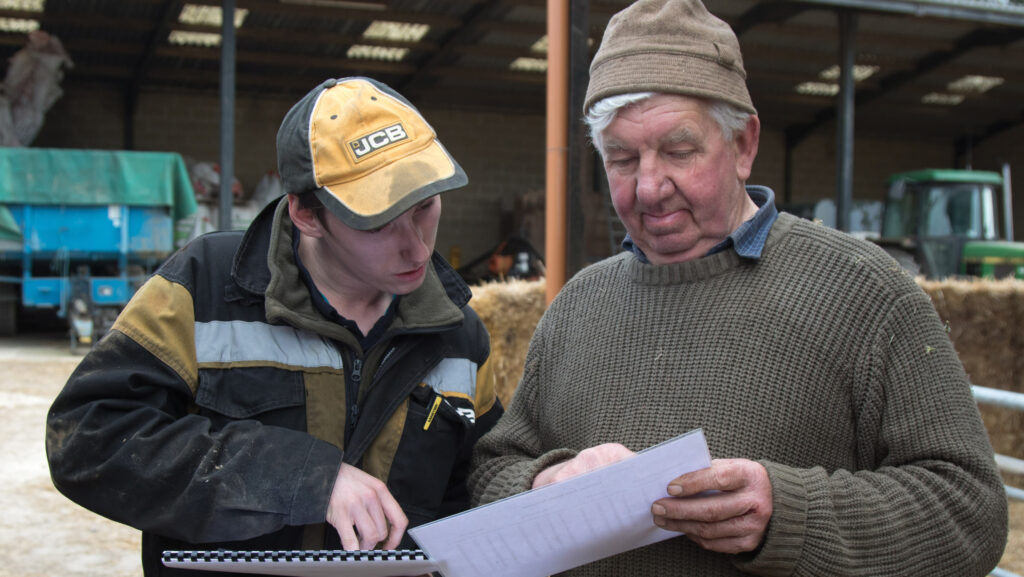How to manage your farm boss to influence decision-making
 © Adobe Stock
© Adobe Stock If you can learn to manage your boss at work, you acquire influencing skills, stakeholder strategy and how to set in motion low-risk change that benefits the business – and you.
The employer-employee relationship is 50:50, and both sides have to be happy with it for it to work, says LIC consultant Piers Badnell.
He thinks there is plenty to gain from managing your approach to your boss.
See also: How to influence good people to help your farm business
“It’s really about communication between the both of you and, as an employee, managing your side of the equation well.
If you use open questions [which prompt detailed answers] to your boss, for instance, it will be easier to find out what they want and expect of you,” he explains.
It can be particularly challenging, however, for farm workers to manage upwards.
When the boss is the farm owner, you are working for someone who has grown up learning how to run the operation and now combines home, work and family on a daily basis.
But as most people spend the vast majority of their time in the workplace, to get the most out of it and forge a good career in farming, it is important to be proactive, says Irish independent consultant Dr Nollaig Heffernan.
“It would be wonderful if you could enjoy work. If you are miserable, over time it seeps into your personal life,” she says.

© Tim Scrivener
Trusting relationships
“Why should you try to manage your boss? You can influence business decisions on farm and make the business more successful, as well as improve your own skill set,” says Nollaig.
In agriculture, there are opportunities for excellent employees in some sort of partnership or shareholding. Good self starters who show initiative are wanted.”
The key skill to develop is influencing – it is a long game of building trust and creating a relationship “so the other person is ready to listen to you and will have a conversation again with you”.
Children grow up being aware of the line of power at school, yet they are also learning to recognise the difficult teachers and, at home, how to manipulate their siblings.
By adulthood, Nollaig says, they need to discover how to transfer these skills to the workplace – and grow them.
“I often come across ‘innocent lamb’ types who think if they work hard, surely that’s enough,” she says.
“But as soon as there is more than one person involved, you get politics.
“Hoping that things will change and work in your favour is a very passive strategy.
“So how can I get the boss to recognise what I offer?
“You start by showing up on time every day; applying yourself at work; doing a good job; asking if you don’t understand something; and looking after the farm’s tools and equipment.
“This is partly helped by good standard operating procedures – following them removes the embarrassment of having to ask again, or be told again, how to do something.”
Strategic thinking
Nollaig recommends observing and monitoring your boss to see patterns.
This is how to find out, for instance, that someone may not be good on Monday mornings, Friday afternoons, or until they have had their first cigarette.
She says this is strategic thinking about timing: finding out when is best to speak to someone, what they are receptive to – and what motivates them.
“Take time to establish if your boss likes to talk about cows, paddocks or parlours.
“Some people may be easier to deal with on a field walk, or by speaking to their wife/dad/son [who has influence].
“A farming male who is embedded in the business is more difficult to crack. You might have to speak in golfing terms, pedigree Holsteins, or machinery before they will listen to you.”
Presentation of ideas
The next step is to understand that new information is a threat to the person receiving it, so make your ideas and suggestions low risk.
If you tell the boss what to do – even if it is a great idea – you are effectively telling them they are wrong.
“Don’t use the word ‘change’, because the other person just hears ‘you are wrong’, and that is extremely difficult for a king in their kingdom to hear,” she says.
Nollaig explains that you will potentially be perceived as a threat to the other person, so you need to keep them in their non-emotional, logical brain state, which is non-threatening.
Give them an opportunity to be receptive to your idea by making sure they are not vulnerable (in other words, not catching them when they are tired/hungry/stressed).
The better approach is to ask: “I was wondering if I could try this”, and state what you will do to mitigate risks and correct failure.
A stakeholder map may be necessary in a hierarchical farming business that operates around several layers of family managers and staff.
Nollaig says this structure is designed to protect each layer – senior management does not want to have to decide what to do about jobs such as dustbins.
If you are at the bottom of this hierarchy, you have to decide who you influence: who has the authority, who can move you forward. And it may not be your direct line manager.
“Find out who are the blockers, who makes decisions,” she advises.
Time-limited effort
Although learning influencing skills is lifelong, and every job will teach a different aspect, Nollaig says it is still important to put a timescale on your efforts.
Mistakes can be made, and lessons learned, building up a wealth of experience along the way.
But she is certain that if there is genuinely no movement or change as a result of taking time to influence, you can leave the job making a “well-informed exit” without feeling guilty.
“Give it three to six months. You know you have options to try these strategies and improve your skill set.
“At work, it is in your best interests to be as pleasant and manageable as possible, so be proactive in your own behaviour in the workplace. Happiness and contentment are a choice – see if you can fix it.”
